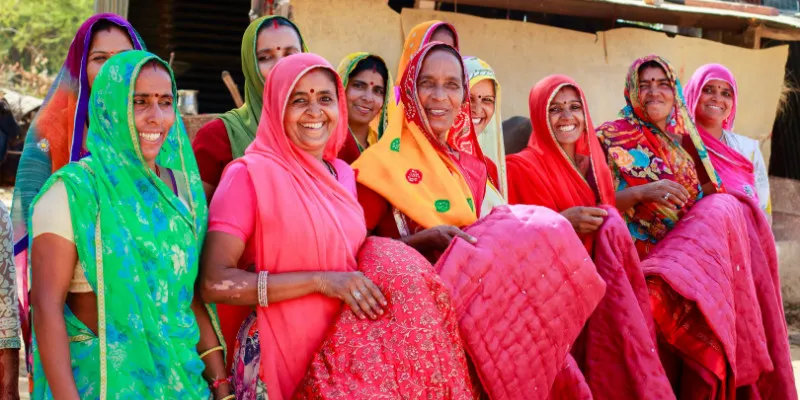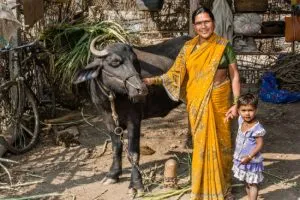Milaap is enabling social development through an online peer-to-peer model
When Prema’s young daughter, Nisha, was diagnosed of a rare heart condition that required Rs 8 lakh for her to be operated upon, it signalled a crisis in the family. Prema worked as a receptionist for a small family enterprise and her husband did odd plumbing jobs. His income was erratic and the family largely survived on Prema’s meager salary, leaving negligible or no savings at the end of each month.

Anyone of us could be in Prema’s situation. And in such times, our family and friends are the ones we are likely to seek help from. Now imagine the same in a digitally connected world, where Prema can create an online donation webpage within a few minutes, send her appeal to others, and start raising funds. People can donate and share the campaign on social media with just a click. That ease-of-use, propagation on social media, and one tap donations on a phone can get Prema’s appeal to strangers across the world.
Milaap believes that crowdfunding will shape the way we give, and the possibilities are endless. People raise donations for personal causes, loved ones, pets and animals, charities and natural disasters. Ayush, from a village near Kanpur, raised funds to pursue his scholarship in MIT USA earlier this year. Deepika Bharadwaj’s fundraiser for martyr Gangadhar Dalui’s family, received over 1,300 shares on Facebook, and helped her raise over Rs 5 Lacs. On a larger scale, a lot of people crowdfunded over Rs. 1.6 Crore in donations for floods in Chennai last year. “Two years from the launch of personal fundraisers on Milaap, we are surprised to see the diversity of causes, and willingness of people to help strangers”, says Mayukh Choudhury, Co-founder and CEO. With a community of over 100,000, the key focus of Milaap is to build a transparent and trusted platform as the leaders of crowdfunding.
However, Milaap had a very interesting journey to reach where it’s today, and its origins are as exciting as the growth of the company today.

The origins
In 2010, Milaap started with the objective of providing access to basic amenities, education, livelihood support for people in India. Shobha Kamble is a single mother of four children and an ex-devadasi. Living in Balwad, a village in North Karnataka’s Belgaum district which for long, has been grappling with social stigma, Shobha’s every attempt to find herself a respectable employment had failed. With three children to support, she had little choice but to resume her role as a Devadasi – a system in which young women are forcibly dedicated to service local temples and later into the sex trade. It was when her fourth child was born, that she decided to break from the shackles of social oppression, she had endured for so long. Luckily, she came across Mahila Abhivrudhi Maththu Samrakshana Samsthe (MASS) - an organisation which has been working towards empowering victims of the devadasi system, by imparting livelihood training and making them self-reliant. Through MASS, Shobha borrowed a microloan and bought two buffaloes. Today, Shobha sells milk to a local cooperative, is slowly expanding her business and sending her children to school, ensuring they reap the benefits of an educated populace.
In June 2013, MASS entered in to a long-term partnership with Milaap, to provide loans for starting small businesses to its network of former Devadasis trained in sustainable livelihood skills to start small businesses. Since then, Milaap has disbursed approximately Rs 6 crore, enabling around 2,800 women with microloans to achieve financial independence. Mayukh Choudhury, Co-founder and CEO of Milaap says, “It’s unconventional and innovative – rehabilitation of devadasis using microfinancing as a model, one which required patient capital. We stepped in at a time when traditional banks were unwilling to lend; our model is about trusting novel ideas that have a potential to create long-term impact.”
This is just one example. Milaap has partnered with 60+ partner organizations and are impacting the lives of over 288,000 BoP (Bottom of Pyramid) population.
The origins of Milaap can be traced back to 2008 when co-founders Mayukh Choudhury and Anoj Viswanathan met while working for a solar lantern loan project in rural Orissa. The transformative (economic) impact lighting products have on the beneficiaries was evident, but, so was the significant dearth of capital in energy financing. And this resistance to new forms of lending among microfinance institutions (MFIs) was apparent across other essential services sectors as well – education, water and sanitation. Mayukh explains, “The bigger investors are wary of experimenting as they were more focused on standardising the established models. And this meant, there was a strong case for patient and flexible capital.”
The idea of Milaap had thus, started taking shape. Mayukh recalls, “Our prime concern was who would fund our idea? So, we began exploring different models. Crowdfunding was one of them and the phenomenal success of Kiva, was one we couldn’t ignore.” He adds, “Kiva didn’t have a presence in India but there was a big enough market and absorption capacity for multiple Kivas to be present.”
Thus, Bengaluru-based Milaap was founded in 2010 to deploy online lending to fill existing capital gap for MFIs in underserved, inaccessible geographies, which were building lending portfolios for essential services. It's been six years to Milaap now and finding partner organisations has become a lot easier. Mayukh establishes, "We are now known as an organisation that will fund initiatives, which otherwise, won't be funded. While there are inbound requests, we also have forged strong relationships with Kiva, Diya Vikas Capital among others, who send us recommendations regularly."
With exceeding partner requests and significant on-ground experience, Milaap has outlined a selection criteria for its partners. There are three key things -
Is it an innovative model of lending?
Is it an underserved geography?
Do the beneficiaries belong to underprivileged communities?
Once the partner organisation has been selected, Milaap issues a small line of credit, mainly to assess the partner's model and slowly increases the line of credit. Mayukh says, "As a benchmark, we lend a maximum of 30 per cent of financial needs as we don’t want to be perpetual lenders to any of our partners; that defeats the purpose of patient capital. The aim is to empower partners to become self-sustainable.”
Today, cumulatively, Milaap has disbursed 62,008 micro-loans through its 60+ partner organizations, which have impacted the lives of over 288,000 BoP (Bottom of Pyramid) people. The repayment rate for the micro-loans has been a remarkable 99.21 per cent.
Milaap 2.0 – Crowdfunding for personal causes

Milaap's microlending model was doing well when (in 2014), Anoj and Mayukh decided to experiment with newer models. Two reasons influenced their decisions:1. "At that time, we had around 25 team partners and quite a few had tasted success. Naturally, their capital requirements were exceeding the limits of what an MFI could provide. This made an increasing case for introducing institutional sources of funding and that's how our microlending model evolved."
2. "Secondly, there were many one-off requests from our lenders to raise money during natural calamities, particularly Uttarakhand Floods 2013. So, we listened to our lenders and opened up our platform for the world to fundraise for individual causes."
Did the risk pay off? Fortunately, yes. Mayukh reaffirms, "Today, both our experiments dictate our entire business model. The donation platform alone has seen over 120,000 donors and is only growing." People actively fundraise for diverse needs such as education, animals, natural calamities, with medical emergencies topping the lists. The collective results have been impressive as Milaap is nurturing a growing community from over 120 countries. Overall, Milaap has raised approximately INR 112 crore (USD $16m), in donations and loans. On one hand, the technology team of Milaap builds the product to make giving as easy as shopping online; on the other, the community team verifies campaigns, and helps campaign organisers create better stories, to create a trusted community. At the intersection of technology, social good and small amounts of goodwill from online Samaritans, the possibilities are limitless. Milaap has indeed introduced a silent revolution in India, one which is bringing a permanent and impactful change in the way people help each other, in today’s digital world. And the revolution is here to stay.
As Mayukh sums up the conversation, “I see Milaap becoming the giving layer of internet in India. We want to make giving a part of everyday lives.”
Disclaimer : This article has been written by Shweta Vitta, Communications Lead at Unitus Seed Fund. Unitus Seed Fund invested in Milaap in 2012.







